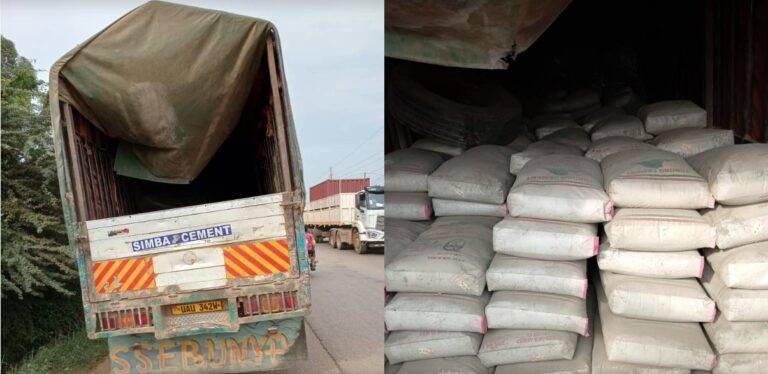A joint security operation has uncovered a cartel involved in the production and distribution of fake cement, leading to the arrest of seven suspects and the seizure of 380 bags of counterfeit cement.
The sting operation, conducted on Monday in Ticaf Cell, Osukuru Sub-County, Tororo District, was spearheaded by the Internal Security Organisation (ISO) following months of surveillance prompted by widespread public complaints.
According to Elgon Regional Police Crime Intelligence Officer Milton Birungi, the fake cement was being sold in packaging imitating the logos of reputable cement manufacturers, including Tororo and Simba Cement.
Uganda National Bureau of Standards (UNBS) officials, who were part of the operation, have taken samples of the fake cement for laboratory analysis to determine its exact composition.
“The suspects will be charged with selling and distributing substandard counterfeit cement. Their identities remain undisclosed for now to avoid jeopardizing ongoing investigations,” Birungi stated.
A Well-Organized Cartel
Investigations reveal that the cartel has been operating for years, using an elaborate supply chain that involves corrupt employees within cement factories, transporters, and suppliers.
Some factory workers allegedly siphoned key ingredients such as cement dust, clinker, and pozzolana rock stones, while truck drivers who transport wet, high-grade cement to major construction sites, such as dams, also played a crucial role.
Security sources disclosed that the cartel sourced fine white sand from a quarry in Isimba, Njeru, Buikwe District, using it as the primary component in their fake cement mixture.
They would blend cement dust, clinker, and pozzolana with this sand, heat the mixture in makeshift furnaces, and then package it using stolen or smuggled factory bags.
Devastating Consequences for Construction
The influx of fake cement into the market has led to structural failures, with several buildings collapsing due to weak foundations.
Victims of the scam, including Wilbrot Owor and Juliet Nabukwasi, recounted their experiences of losing their newly constructed homes.
Owor’s house crumbled after mild rain, while Nabukwasi’s collapsed just two weeks after completion, forcing her to source cement directly from a factory to rebuild her home.
Tororo Resident District Commissioner Sadic Bategana condemned the fraudulent activities, emphasizing that fake cement has turned construction sites into potential death traps.
“Many lives and investments are at stake due to these unscrupulous suppliers. This crackdown must put an end to the menace,” Bategana asserted.
How the Cartel Operated
Security sources detailed the fraudulent manufacturing process: after acquiring cement dust, clinker, and pozzolana, the cartel mixed these materials with white sand from Isimba.
The mixture was then heated in rudimentary furnaces until it turned into powder, mimicking real cement.
In some cases, truck drivers would extract residual wet cement from their tanks, mix it with sand, and subject it to heat treatment before repackaging it for sale.
Authorities have vowed to dismantle the cartel and ensure those responsible face justice. Further investigations are underway to track down additional accomplices in this multi-layered fraud scheme.

